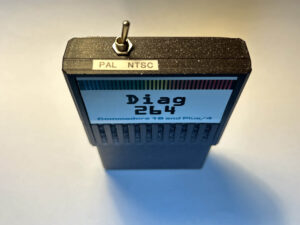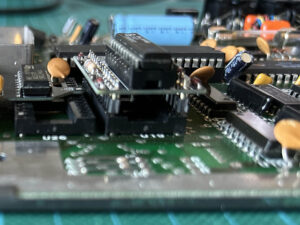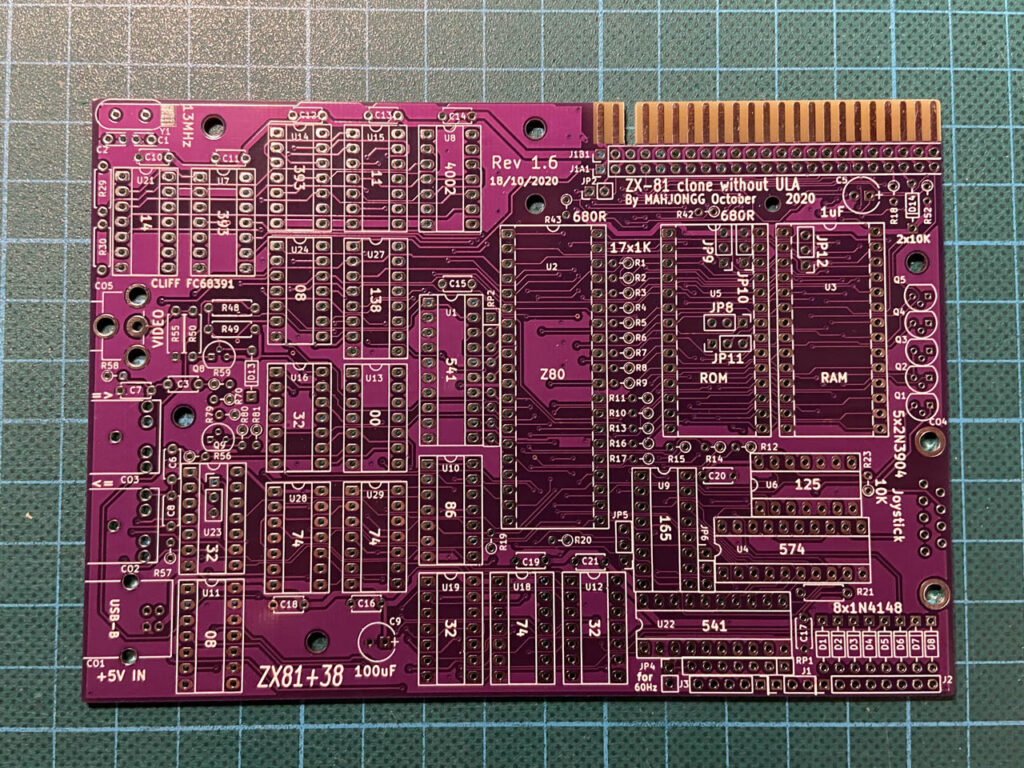Recently, an Amiga 500 in generally good condition found its way to me. It’s my first Amiga ever, because back in the day I was loyal to Commodore’s 8-bitters for a long time. So I missed the heyday of the Amiga and then directly switched to a PC. That’s why I know next to nothing about the Amiga so far.
Category Archives: Retrocomputing
Making Cartridges for the Commodore C16, C116, and Plus/4
As I mentioned a while ago, I had the opportunity to repair a bunch of broken boards for Commodore C16 and Plus/4 computers. This led to a couple of new projects, the ROMulator and the PLA264. To help with the actual repairs, I built myself a Diag264 test harness.
So, I also needed a cartridge to hold the diagnostic ROM. The Diag264 page suggests either modifying an original cartridge or using the OpenC16Cart. Destroying an original cartridge didn’t feel right, so I went with the latter option.
SX-64 Tiny Reset – Count Reset Button Presses
Recently I had the opportunity to buy a Commodore SX-64 for a very reasonable price. Back when I had my Breadbox C64 as a kid, I was fascinated by this portable version and dreamed of owning one myself to take on our family vacations. In short, I couldn’t resist and bought it now.
C128 Diagnostic Cartridge #325093-01 Replicated
The refurbishment and repair of the C16 and Plus/4 motherboards is largely complete. Next up is a small stack of C128 boards. Recently I received a C128 diagnostic cartridge with harness as a donation, which was also only slightly tattered.
It was a “C-128 Diagnostic Rev 1.4” with harness “ASSY NO. 325093-01”, which I had never heard of before. Information on this cartridge seems sparse, but I found it mentioned on Jani’s page on diagnostic carts and in an older forum thread (German).
How to Lower Your PLA: The PLA264
In my previous post I described in detail how I created a ROM replacement for the Commodore Plus/4 computer and how I made sure that it would fit into the very tight space of the closed case.
The four ROM chips of the Plus/4 are sitting all in one row, and then there is a fifth IC right next to them: the 251641-02 PLA. This PLA chip is the same for all TED based Commodore computers, the C16, the C116, and the Plus/4. In the past, I used the excellent PLA16V8 from D. Mantione as a replacement. The PLA16V8 is quick to build from cheap parts that are easily available. And for a C16 with its roomy case, it’s a perfectly adequate solution.
With the Plus/4, however, it’s all about space again: There are only a few millimeters between the original PLA and the keyboard above it. So while the PLA16V8 works fine on a Plus/4 motherboard, it is far too tall to fit inside the Plus/4’s case.
Four at One Blow: The ROMulator
The Idea
Recently, I’ve been repairing a few broken and slightly weathered motherboards for Commodore C16 and Plus/4 computers.
When I ran out of spare parts, I replaced the defective Kernal ROM on one of the Plus/4 boards with a W27C512 EEPROM. You can still source a used W27C512 easily and somewhat cheaply (on eBay, for example), making it my all-purpose tool for replacing ancient parallel ROMs.
Building a PS/2 to 1351 Mouse Adapter
I’ve been meaning to build myself a mouse adapter for the Commodore 64 for quite some time. The recent release of the unofficial port of “Eye of the Beholder” for the C64 was a welcome excuse to finally get to work on this project.
The Mouse 1351 made by Commodore can be plugged directly into the control port of the C64 or C128 and it has two different operating modes. In joystick mode, the input from the mouse is compatible with that of a regular, digital joystick. In proportional mode, which is the default, it behaves and feels like any mouse used on modern computers.

Commodore Mouse 1351. (Image source: Wikipedia, License: CC BY-SA 3.0)
The KERNALquattro, yet another ROM Replacement
Recently, I got hold of quite a few broken Commodore 64 motherboards. It has been a while since I last had the chance to repair one of those boards and it was fun! I dubbed this repair project the “Blank Screen Marathon” and documented the whole process in German on Forum64. I might still give a summary in English here at a later point. But today, I’d like to introduce a small side project that resulted from this repair marathon.
SyncFix64 Revisited – What about the VIC-20?
It’s been over four years now that I created the SyncFix64 module in order to connect a cheapo car TFT display to my C64. This setup has served me well and it helped me repair quite a few motherboards since then. A few years later, when I got my first VIC-20 the display again failed to show anything despite the integrated SyncFix64 module. That was kind of disappointing, but I was lacking time and motivation back then to investigate further.
Building a new ZX81 Computer
The ZX81+38 is a clone of the Sinclair ZX81 home computer that replaces the ULA found in the original with standard logic ICs. That means, it can be built with all parts still readily available today. It was created by Mahjongg, introduced on a forum dedicated to Sinclair computers, and document on the web with construction files available on Github.










